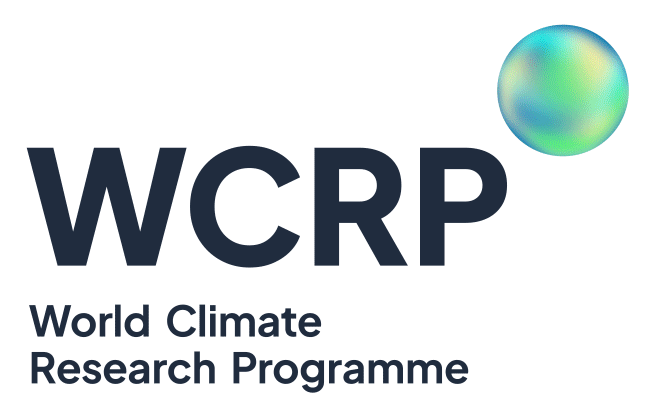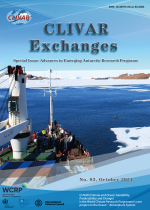An imperative to monitor Earth’s energy imbalance

Under an equilibrium climate, there is a global balance between the absorbed solar radiation and the outgoing longwave radiation emitted by the Earth. Perturbations due to internal climate variability and external climate forcings can create an Earth’s Energy Imbalance (EEI, Figure 1a), which is discussed in this scientific perspective as the most fundamental metric of global warming.
The main cause of climate change is increased greenhouse gases from human activities, which alter the composition of the atmosphere and trap excess energy in the Earth system. This positive EEI results in planetary heating and is the root cause of observed global warming. Over 90% of the excess heat goes into the oceans, which have enormous capacity to store the energy and also move it around. The various climate impacts that we are familiar with – such as warmer surface and ocean temperatures, sea level rise and loss of land-based ice – are all symptoms of the energy imbalance (Figure 1b). Hence, the Earth’s energy imbalance is an essential metric for climate research, as this is the single quantity defining the status of global climate change and expectations for continued global warming.
Advances in space-borne and in situ observations and climate modelling over the past two decades means that our ability to reliably monitor and simulate this most vital metric of climate change is within grasp for the first time. von Schuckmann et al (2016) discuss the different approaches and accuracies needed to resolve climatic forcing of EEI, leading to the recommendation that the most promising approach lies in combining monitoring of ocean heat content change with direct radiation measurements from space. Note however, that the EEI relates to the rates of change of OHC, which provides an additional challenge to get right.
Progress towards monitoring of EEI requires fostering of international multidisciplinary efforts, through activities such as the CLIVAR research focus CONCEPT-HEAT (www.clivar.org/research-foci/heat-budget). Two key CLIVAR activities supporting this effort are: (i) the International Quality Controlled Ocean Database initiative (IQuOD, www.iquod.org), which strives to construct a climate-quality database using a consistent and unified quality control standard; (ii) the ocean reanalysis inter-comparison project ORA-IP (Balmaseda et al., 2015). which promotes systematic evaluation and improvement of ocean reanalyses for use in climate monitoring, research and forecasting applications.

Figure 1 (as reproduced from von Schuckmann et al., 2016): | Schematic representations of the flow and storage of energy in the Earth’s climate system and related consequences. a, EEI as a result of human activities. The global ocean is the major heat reservoir, with about 90% of EEI stored there. The rest goes into warming the land and atmosphere, as well as melting ice (as indicated). b, ‘Symptoms’ of positive EEI, including rises in Earth’s surface temperature, ocean heat content, ocean mass, global mean sea level, atmospheric temperature and moisture, drought, flooding and erosion, increased extreme events, and evaporation − precipitation (E−P), as well as a decrease in land and sea ice, snow cover and glaciers.
Summary written by Lei Han, Karina von Schuckmann, Matthew Palmer and Kevin Trenberth
An imperative to monitor Earth’s energy imbalance (Nature Climate Change)
K. von Schuckmann1,2, M. D. Palmer3, K. E. Trenberth4, A. Cazenave5,6, D. Chambers7, N. Champollion6, J. Hansen8, S. A. Josey9, N. Loeb10, P.-P. Mathieu11, B. Meyssignac5 and M. Wild12
1Mediterranean Institute of Oceanography, Université de Toulon, Aix-Marseille Université, CNRS, IRD, MIO UM 110, 83041 Toulon, France,
2Mercator Océan, 10 Rue Hermés, 31520 Ramonville St Agne, France,
3Met Office Hadley Centre, FitzRoy Road, Exeter, Devon EX1 3PB, UK,
4National Center for Atmospheric Research, 1850 Table Mesa Drive, Boulder, Colorado 80305, USA,
5Laboratoire d’Etudes en Géophysique et Océanographie Spatiales/Centre national d’études spatiales, 18 avenue Edouard BELIN, 31401 Toulouse CEDEX 9, France,
6International Space Science Institute, Hallerstrasse 6, 3012 Bern,Switzerland,
7University of South Florida, College of Marine Science, 140 7th Avenue South, St Petersburg, Florida 33701, USA,
8Earth Institute, Columbia University, 475 Riverside Drive, New York, New York 10115, USA,
9National Oceanography Centre, Waterfront Campus, European Way, Southampton SO14 3ZH, UK,
10NASA Langley Research Center, Mail Stop 420, Hampton, Virginia 23681-2199, USA,
11European Space Agency, Via Galileo Galilei, Casella Postale 64, 00044 Frascati (RM), Italy,
12ETH, Universitätstrasse 16, 8092 Zürich, Switzerland.
(Published online 27 January 2016)














Add new comment